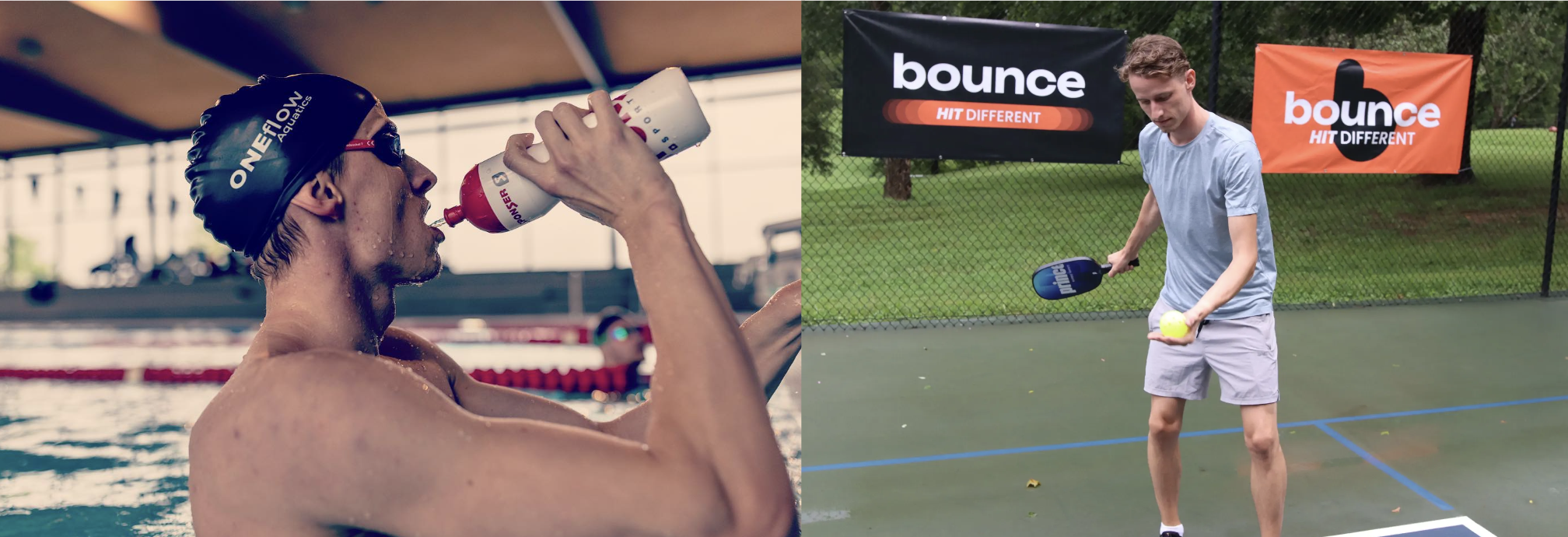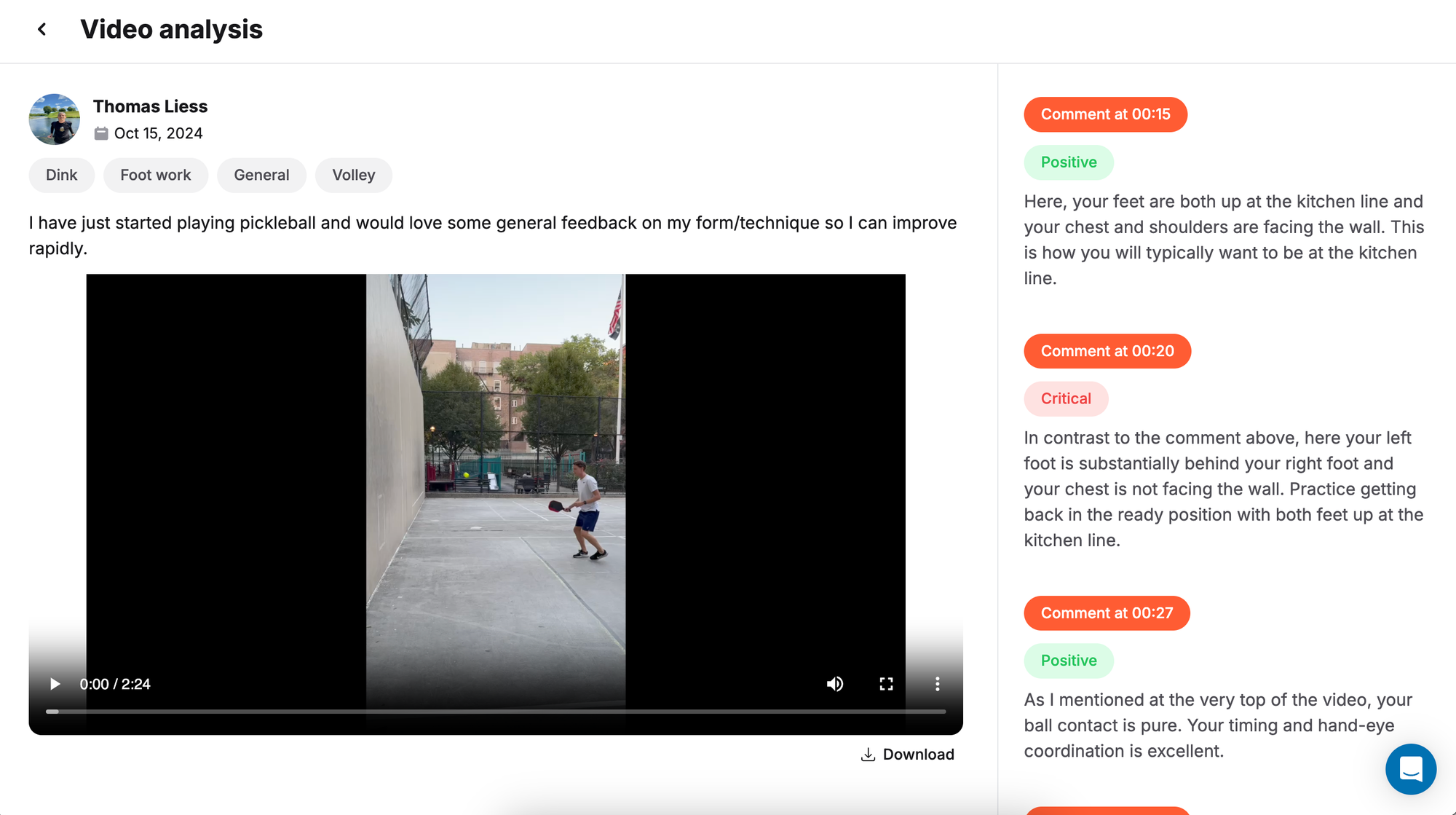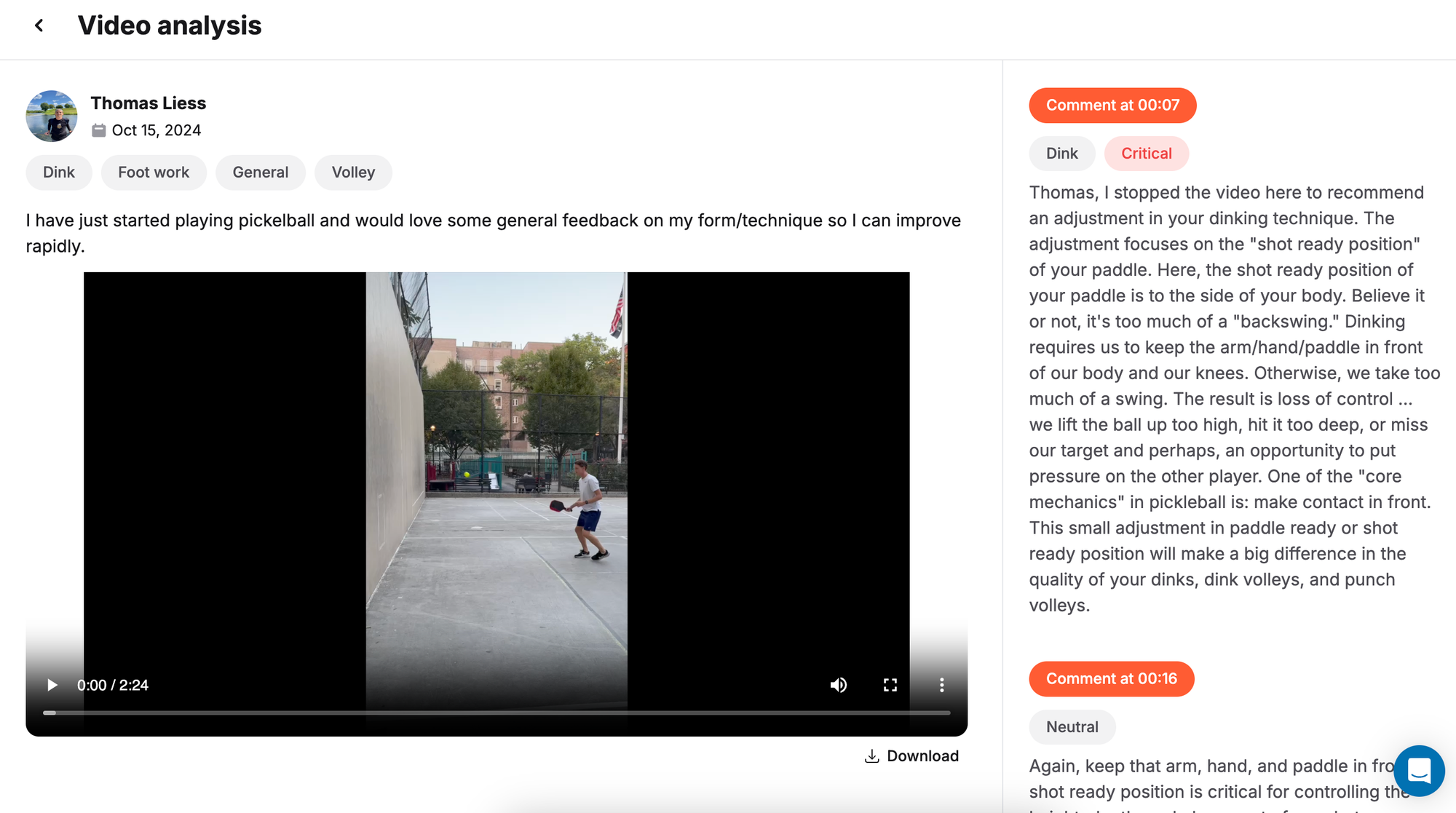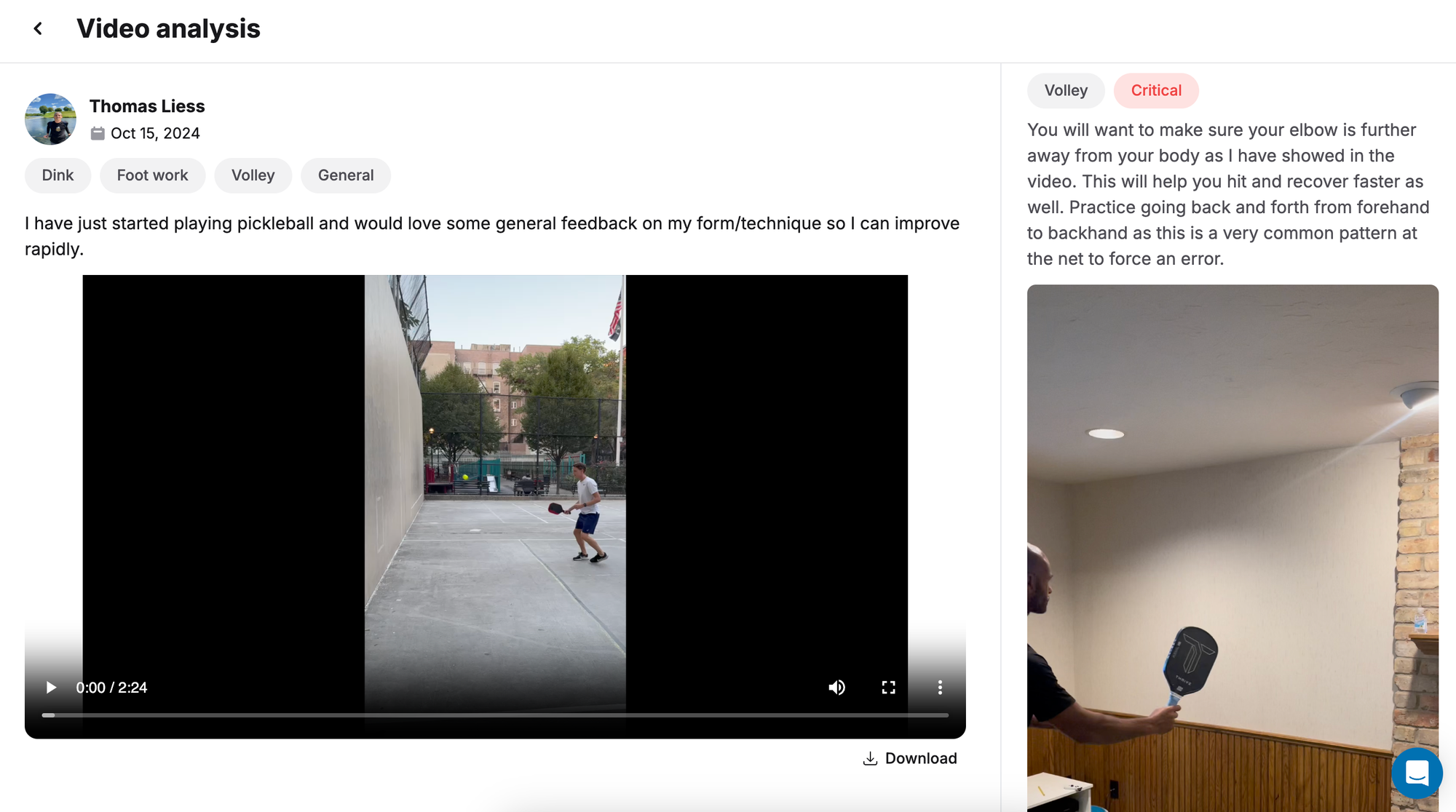
Meet Thomas Liess, a former professional swimmer who once powered through lanes for the Swiss national team.
After dedicating years to the rigorous demands of competitive swimming, Thomas decided it was time for a new chapter. He moved to the vibrant city of New York to pursue his Master's and Ph.D. in Economics.
But as any athlete knows, the thrill of competition and the camaraderie of sports never truly leaves the heart.
Amid lectures and research papers, Thomas found himself yearning for the exhilaration of athletic challenge in an environment that might introduce him to more young professionals. It was during this quest that he stumbled upon a game that would reignite his competitive fire: pickleball.
Discovering pickleball in New York
Thomas first heard about pickleball through a fellow student who raved about its fast-paced action and friendly community. Intrigued, he decided to check out local clubs at Pier 2 in Brooklyn.
The welcoming atmosphere of the pickleball community was immediate. Players of all ages and skill levels gathered to share tips, challenge each other, and most importantly, have fun.
Thomas quickly realized that pickleball wasn't just a game; it was a social experience that brought people together.
"I was amazed at how quickly I felt part of the community," Thomas recalls. "Everyone was so encouraging, offering advice and inviting me to play at other courts around New York. It was exactly what I needed—a way to meet people while still getting a competitive fix."
Rekindling the competitive spirit
As Thomas played more, his natural athleticism helped him pick up the basics quickly.
However, he also recognized that pickleball had nuance that required dedicated practice to master. His competitive instincts kicked in—he didn't just want to play; he wanted to excel.
Thomas decided to find a pickleball coach.
"Coming from a professional sports background, I knew the importance of technique and strategy," he says. "I wanted to dive deeper into the game, understand its intricacies, and push myself to improve. For that, I knew I needed coaching."
Connecting through technology
As a busy Ph.D. student juggling teaching responsibilities and working at the United Nations, Thomas knew he had limited time to dedicate to getting lessons.
However, he heard from his local community that he could find coaches for on-court and remote lessons on Bounce. Excited about the opportunity to experiment with new technology, Thomas decided to find a few coaches that offered remote services.
"Remote coaching was a game-changer for me," Thomas explains. "It allowed me to access expert advice without disrupting my busy academic schedule. I was even able to get feedback from multiple coaches simultaneously.”
The benefits of remote lessons
- Flexibility: Thomas could submit videos and receive feedback at times that suited him.
- Personalized insights: Coaches provided tailored advice based on his specific needs.
- Access to expertise: He could learn from top coaches he wouldn't have met otherwise.
What Thomas learned via remote lessons
To get started, Thomas went to a small park in SoHo where he could record himself hitting against a wall for a few minutes. Next, he chose a few coaches on Bounce that had varying backgrounds and philosophies on coaching: Eric Wold, David Dutrieuille, and Mark Livingston.
Here's what he learned from each:
Lesson #1: The importance of maintaining ready position
The issue Thomas had was he often didn't return his paddle to the "ready position" and sometimes brought it behind his waist.
Solution
Instead, Eric coached him to always return the paddle to the ready position between waist and chest height in front of the body. This position prepares you for any incoming shot and improves reaction time.
Thomas's left foot was substantially behind his right foot, and his chest wasn't facing the net.
Solution
Eric had him practice returning to the ready position with both feet aligned at the kitchen line, ensuring his chest faced forward before each shot. This stance enhanced Thomas' balance and readiness.
On some shots, Thomas stepped back and made contact with the ball behind his body.
Solution
Eric worked with him on stepping forward and making contact in front instead. This adjustment increased Thomas' control and power in his shots.
Bounce Unveils ‘Gameday’ Feature to Further Enhance the Amateur Tournament Experience
Bounce, a rapidly growing platform for amateur pickleball, just announced another innovative triumph with its Gameday feature, specifically designed to enrich the tournament experience.
From Thomas:
"Coach Eric's feedback was a real eye-opener. I hadn't realized how much my ready position and footwork were affecting my game. By keeping my paddle up and aligning my feet properly, I've noticed that I'm more prepared for each shot.
Stepping forward to meet the ball has also improved my control significantly. It's amazing how these foundational changes can elevate my play."
See the entire lesson with Coach Eric here:
 Review the entire remote lesson between Coach Eric and Thomas.
Review the entire remote lesson between Coach Eric and Thomas.Lesson #1: Adjusting the shot ready position
Thomas's paddle is positioned to the side of his body during the "shot ready position," which results in too much of a backswing.
Solutions
- Keep paddle in front: Dinking requires keeping the arm, hand, and paddle in front of the body and knees.
- Minimize backswing: Reducing the backswing helps maintain control over the shot.
- Core mechanics: Emphasize making contact with the ball in front of the body.
Although Thomas has a nice open stance for hitting volleys, he is drawing back his arm and elbow slightly, affecting his contact point with the ball.
Solutions
- Avoid "T-Rex" and "Frankenstein" positions:
- T-Rex: Occurs when contact is too close to the body, limiting movement.
- Frankenstein: Happens when reaching too far, causing overextension.
- Optimal contact point: Strive to hit the ball at a comfortable distance in front of the body—not too close or too far.
Lesson #3: Maintaining position at the kitchen
Thomas is stepping back from the non-volley line during play.
Solutions
- Stand your ground: Avoid giving up position at the NVZ whenever possible.
- Use reset shots: Instead of stepping back, execute a short hop or dink volley to handle slow balls.
- Take the ball in the air: This tactic reduces the opponent's reaction time and keeps Thomas in an advantageous position.
From Thomas:
"Coach Mark's insights were incredibly valuable. Realizing that my paddle position was causing an excessive backswing helped me understand why I was losing control on some shots. By keeping my paddle in front and minimizing the backswing, I've noticed my dinks are more precise and harder for opponents to return."
See the entire lesson with Coach Mark here:
 Review the entire remote lesson between Coach Mark and Thomas.
Review the entire remote lesson between Coach Mark and Thomas.Lesson #1: Extending the elbow for improved reach and recovery
Thomas is keeping his elbow too close to his body during his shots.
Solutions
- Elbow position: Extend the elbow further away from the body, as demonstrated in the video.
- Benefits
- Enhances reach, allowing Thomas to cover more ground.
- Improves recovery speed after each shot.
Lesson #2: Stabilizing the lower body during close volleys
During close volleys, Thomas is making small adjustment steps with his feet, causing unnecessary movement.
Solutions
- Quiet the Feet: Practice keeping the feet completely still during volleys at close distances.
- Benefits:
- Stabilizes the head and reduces unnecessary movement.
- Enhances reaction time and improves consistency in hitting the sweet spot.
Lesson #3: Minimizing movement against fast balls
When hitting the ball against the wall at faster speeds, Thomas's lower body and head are moving excessively.
Solutions
- Keep lower body quiet: Reduce lower body movement when dealing with fast-paced balls.
- Use visualization: Imagine balancing a scalding hot cup of coffee on your head to encourage keeping the head still.
- Benefits:
- Improves balance and stability.
- Enhances the ability to react quickly to fast shots.
From Thomas:
"Extending my elbow away from my body has been a game-changer. It not only improves my reach but also allows me to transition between forehand and backhand shots more fluidly. This has made me more effective at the net."
"I hadn't realized how much my foot movement was affecting my volleys. By keeping my feet still and only moving my arm, I've noticed a significant improvement in my reaction time and shot consistency. I feel more grounded and stable during play."
See the entire lesson with Coach David here:
 Review the entire remote lesson between Coach David and Thomas.
Review the entire remote lesson between Coach David and Thomas.Follow along for updates
Stay tuned for more updates and insights into Thomas's progress, which will be shared on The Dink, your go-to source for all things pickleball.
You can also connect with Thomas on Instagram or X (formerly Twitter).
Special Thanks
Pickleball Skill Quiz
Find out your pickleball rating